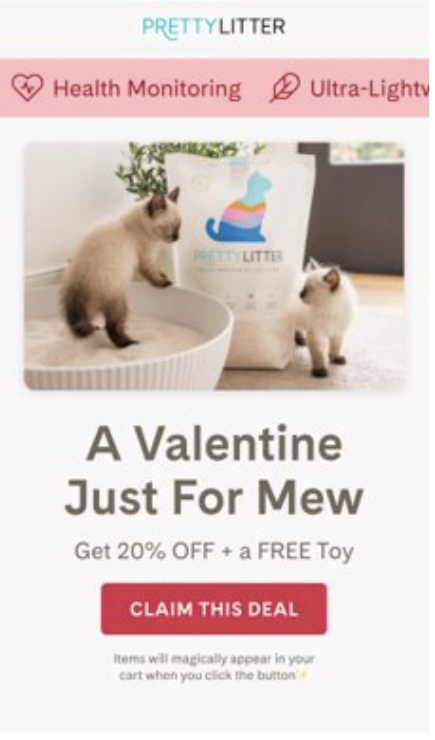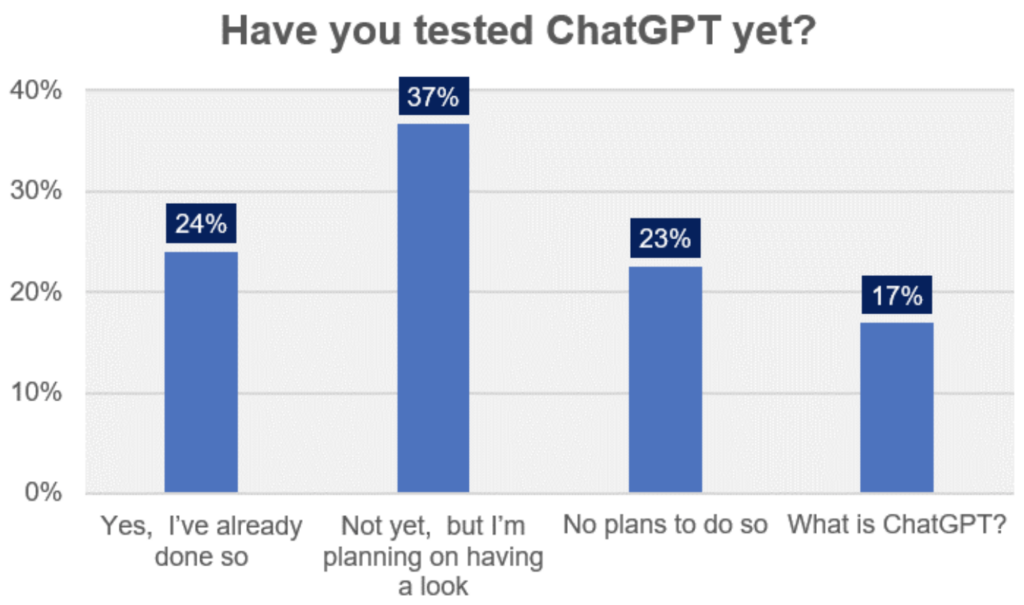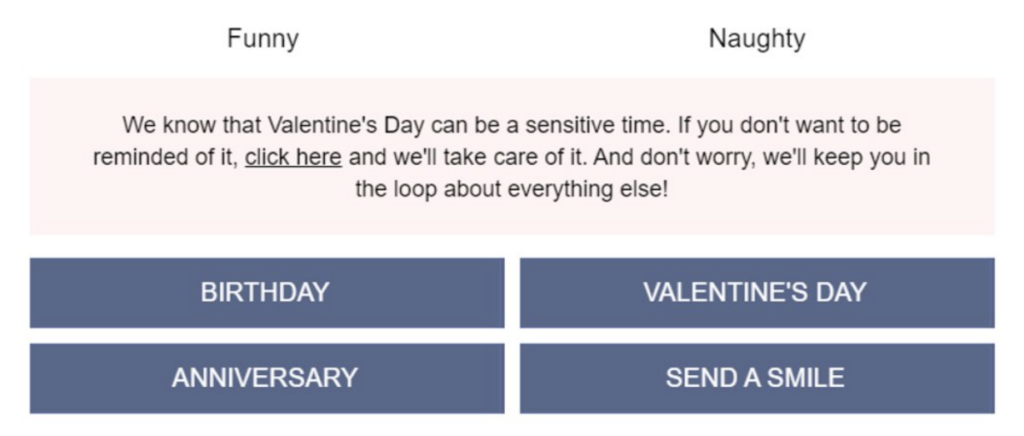Email Marketing
Showing Email Some Love: Valentine’s Day Email Strategies That Work All Year Long
minute read

Valentine’s Day is one of the biggest events on the email marketing calendar. This year, US consumers are forecast to spend $26 billion on Valentine’s Day, or approximately $192 per individual.
This spending won’t be just for romantic partners—shoppers are planning on buying gifts for friends, co-workers, classmates, teachers, and even pets.
But Valentine’s poses some unique challenges for marketers. The promotional window is narrow, the shelf life of typical products is often very short, and there’s a big gap between consideration (which occurs weeks before) and purchase (which occurs weeks days before).
So, how can email marketers deliver great campaigns on Valentine’s Day (and beyond)? In our latest edition of State of Email Live, we spoke with Hickory Farms’ Jen Partin, PrettyLitter’s Matthew Seifert, and eFocus Marketing’s Kate Barrett to get their expert guidance.
Proactive planning
Benjamin Franklin famously said, “by failing to prepare, you are preparing to fail.” Abraham Lincoln’s version was “Give me six hours to chop down a tree and I will spend the first four sharpening the axe.”
These are great guiding principles—and we asked Jen, Matthew, and Kate how the importance of preparation maps back to email marketing.
For food gift retailer Hickory Farms, customer demand is highly seasonal. Planning for Valentine’s Day starts in Q4 of the previous year. This preparation stage includes creating creative briefs, finalizing photography, and doing lots of awareness building because shipping deadlines are a week before the big day!
Different Hickory Farms customer segments receive different offers, including emails promoting core products with a Valentine’s theme, a “storytelling” version with fun ideas for date night, and a budget-friendly version to help money-conscious customers.
Since winning customer eyeshare is so critical during this period, Jen uses Validity’s View Time Optimization feature to guarantee top-of-inbox status at Yahoo and AOL—doubling response rates by doing so!
For cat litter provider PrettyLitter, Valentine’s Day is an opportunity to have some fun. The team uses playful language to focus on the love between customers and their cats. Lead-up starts around two weeks before the big day, and their cross-channel email and SMS campaigns focus on tugging the heartstrings.
Who can resist subject lines like, “It’s a Purr-fect Match for Your Cat’s Litter Box”? (Last year was all about “Feline the Love!”)
Specialist email marketing agency eFocus Marketing works with a broad list of global senders. Kate draws on her wealth of experience to advise the following:
- Use the post-holiday period to review active/inactive data segments.
- Analyze purchase/engagement data from this period.
- Use these insights to inspire customers by connecting them with your product catalogue using refreshed personalization and messaging strategies.
The role of AI in Valentine’s messages
Artificial intelligence is seriously hot right now. Online greeting card retailer Moonpig plans to integrate OpenAI’s ChatGPT so customers can generate personalized holiday messages or poems without scratching their heads to find the right words.
We asked our State of Email webinar audience whether they’ve been thinking about use cases for their programs:
While all the conversation is around ChatGPT, our experts think AI-generated images will take off fastest. Think about it: Consumers are very much “visual first.” We are wired to process visual content far faster than language. But finding original images for every new campaign and message is hard work.
Microsoft has already announced a new graphic design offering with DALL-E 2 integration. Solutions that make it easier and cheaper to generate new images are precisely where marketers will turn first.
Empathy is essential
Sensitive marketers understand Valentine’s Day isn’t for everyone. Customers may not be in relationships, they may have experienced a recent breakup, or may have dealt with the loss of a loved one. This in mind, offering a temporary opt-out (“snooze”) option should be an essential best practice.
We asked our State of Email webinar audience how many have this in place.
The low adoption reported is surprising—in addition to showing consideration to customers, email programs using this feature also benefit from reduced list churn. Oracle research shows use of the snooze option typically decreases permanent unsubscribes by over 82 percent.
Senders can also be proactive gauging these preferences. Knowing subscribers’ communication preferences for events like Valentine’s, birthdays, and anniversaries in advance means they can personalize more effectively using these valuable first-party data points.
Galentine’s is great
Galentine’s Day has risen in prominence, becoming a semi-official day for people to celebrate their non-romantic friendships, providing an opportunity to shower best friends with gifts, love, and quality time. Hickory Farms understands the importance, and it’s a key part of their messaging.
Marketers should recognize that this day resonates with those outside of established couples. This email providers readers with gift ideas, suggestions on how to celebrate with their besties, and even a blog article that explains the “holiday” in more detail.
Showing the love all year long
There’s an old saying that the best relationships celebrate Valentine’s Day every day of the year. We asked our experts how senders can show love to their email programs all year long.
- Jen’s priorities include keeping her finger on the pulse of her subscriber engagement, holding post-campaign briefings to learn what worked and what didn’t, and conducting nonstop testing. She’s a big fan of Validity Everest to make sure her business-critical emails make it to customers’ inboxes.
- Matthew focuses on having great data quality to build a foundation for email success. PrettyLitter uses Validity BriteVerify to validate all new email addresses and mobile numbers at point of sign-up, and they run automated processes to re-validate them on a regular basis. Great data means great deliverability and big benefits for subscriber engagement, too.
- Kate is a big fan of analyzing an audience’s behavioral data to understand how they are engaging, and then using these insights to optimize future performance. She also uses Validity MailCharts as a continual source of examples from in and out of her client’s sectors to keep messaging fresh and engaging for subscribers.
Although some of these email examples are Valentine’s-centric, these principles are evergreen and can be applied to other key email events like Mother’s Day, Father’s Day, Black Friday weekend, and even the periods in between.
To hear more insights from these experts, watch the most recent edition of our State of Email Live webinar on-demand.





